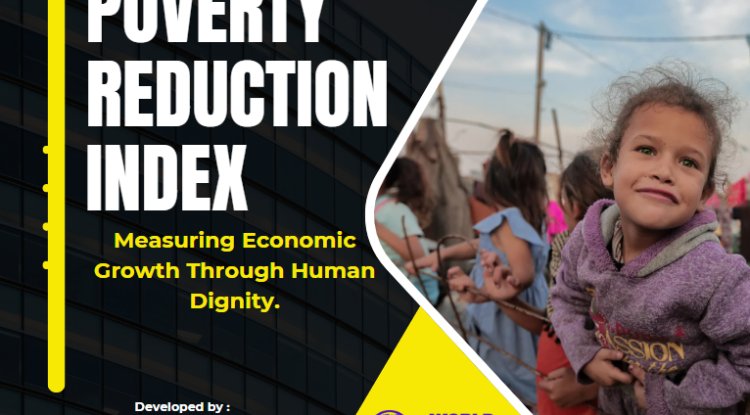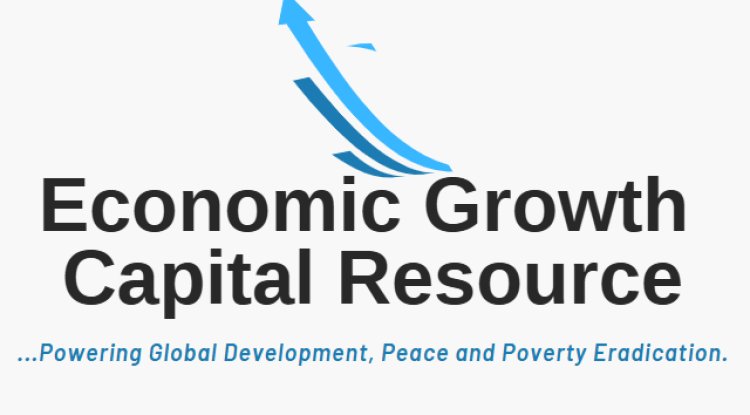PRIORITIZING HEALTH AND SAFETY IN ECONOMIC DEVELOPMENT
In economic development, it is crucial to recognize health and safety's significant role in shaping sub-national regions' prosperity. Healthcare and income are closely intertwined, but it's also essential to note that better health practices and regulations can significantly impact a country's economy.

According to Bloom and Canning, "health may not only be a consequence but also a cause of high income." This intricate dynamic operates through various mechanisms, including promoting human capital, ensuring public health and preventive measures, and facilitating equitable distribution of national funds.
When examining the intersection of healthcare and the economy, it becomes evident how the latter has reaped substantial benefits. Several studies have found a link between income and overall health. Even a mere 1 percent increase in income within developing countries can significantly reduce infant mortality rates. Therefore, enhancing per capita incomes becomes a critical component of any comprehensive health strategy implemented by a nation. However, it is vital to recognize the limitations of this approach. Introducing new treatments and medical advancements often favors those who are economically better off, perpetuating a divide among different socioeconomic classes.
Consequently, healthcare inequality emerges, wherein certain groups within an economy suffer from considerably worse health outcomes than others. This disparity is particularly pronounced in countries like the United States, where health inequality is closely associated with income inequality. As healthcare increasingly becomes privatized, accessing necessary medical services becomes disproportionately challenging for marginalized populations.
Moreover, increased income levels also contribute to higher spending on public and private goods that directly or indirectly improve health. However, this positive impact can only be realized if income distribution policies prioritize equity. The Preston Curve illustrates how, over time, there is an upward shift in the increasing and concave relationship between income and health. Nonetheless, it is crucial to note that this curve only accounts for 10-25% of the improvements countries have achieved in terms of life expectancy and per capita income. Most of the advancements in life expectancy, around 70-90%, are attributable to other factors, such as public health interventions and the diffusion of innovations within the healthcare sector.
Amartya Sen's Capabilities Approach emphasizes that while higher income contributes to better health, it is not the sole determinant given other factors. Additionally, the influence of these factors may vary across countries due to differences in governance and policies. Sen's perspective rests on the belief that healthier worker is more productive, ultimately driving a nation toward wealth.
He identified two processes through which economic growth can impact human health. The first is the growth-mediated process, which thrives on rapid economic growth and relies on broad-based economic systems, strongly emphasizing employment and investments in social services such as healthcare, education, and social security. The second process is the support-led process, which does not rely solely on economic growth but emphasizes expert social support for healthcare, education, and other relevant social arrangements. This holistic approach to healthcare can catalyze human capital and provide valuable insights into how improved health can generate economic benefits.
Considering the context of sub-national regions, the significance of health and safety in economic development becomes even more pronounced. These regions often face unique challenges and opportunities, necessitating tailored approaches to healthcare and economic policies. Health and safety considerations are critical in attracting investments, fostering entrepreneurship, and maintaining a productive workforce. Sub-national regions that prioritize the well-being of their residents through robust healthcare systems, preventive measures, and equitable allocation of resources are more likely to experience sustainable economic growth. By nurturing human capital and ensuring the overall welfare of their population, sub-national regions can create an environment conducive to innovation, productivity, and long-term prosperity.
The nexus between health and safety with economic development in sub-national regions is undeniable. Acknowledging the impact of healthcare on an individual's or nation's income is paramount, but recognizing that improved health practices and policies can profoundly shape a country's economy is equally important. Sub-national regions can foster sustainable economic growth by promoting human capital, implementing public health measures, and ensuring equitable resource allocation. Health and safety considerations are essential pillars of economic development, providing the foundation for vibrant and prosperous sub-national regions.
wsandn.org
The Importance of Health and Safety in Local Communities
Health and safety are paramount in any society, and their significance becomes even more pronounced in local communities attracting investments and foreign organizations. As sub-national governments successfully attract investors and establish companies, factories, and infrastructural development, they must prioritize the well-being of their people and implement robust regulations to protect them from potential hazards. Let's explore the crucial role of health and safety in local communities and highlights the need for governments to prioritize the welfare of their citizens.
wsandn.org
Promoting Public Health
Local communities' Health and safety measures contribute significantly to public health. When investors and foreign organizations establish themselves in a particular area, the population experiences an influx of people, resources, and economic activities. However, this rapid growth can strain local resources and infrastructure, leading to potential health hazards. Governments may protect the well-being of their population by prioritizing health and safety and implementing health-risk-mitigation measures such as improved sanitation, waste management, and access to clean water and healthcare services.
wsandn.org
Safe and Secure Workplaces
The arrival of investors and organizations in local communities often leads to the establishment of factories and companies. These enterprises bring employment opportunities, economic growth, and development. However, without proper health and safety regulations, workplaces can become hazardous environments for employees. Governments must enforce occupational health and safety standards to protect workers from accidents, injuries, and diseases. Local communities may recruit competent labor, stimulate productivity, and eventually contribute to the overall well-being of their citizens by providing a safe and secure work environment.
wsandn.org
Environmental Protection
Industrial and infrastructural development can have significant impacts on the environment. Local communities must address these concerns to ensure their region's sustainability and long-term health. Governments should prioritize environmental health by implementing policies that promote responsible waste management, sustainable resource utilization, and pollution control. These measures protect the local ecosystem and safeguard residents' health from potential environmental hazards. A healthy environment directly contributes to local communities' overall quality of life.
wsandn.org
Community Engagement and Empowerment
Health and safety initiatives in local communities promote community engagement and empowerment. Governments actively involve community members in decision-making processes regarding health and safety regulations, which fosters a sense of ownership and responsibility. Public awareness campaigns, educational programs, and training workshops can empower residents to adopt healthy lifestyles, follow safety protocols, and become active participants in their well-being. This participatory approach strengthens the bond between the government and the local community, ultimately leading to more effective and sustainable health and safety practices.
wsandn.org
Economic Growth and Investor Confidence
Prioritizing health and safety in local communities contributes to long-term economic growth and enhances investor confidence. When investors witness a commitment to the local population's well-being, they are more likely to invest in the area and establish long-lasting partnerships. Robust health and safety regulations indicate a stable and conducive environment for business operations. By providing a safe and healthy community, local governments can attract further investments, stimulate economic growth, and create a favorable reputation to attract more organizations to their region.
wsandn.org
Crisis Preparedness and Response
Local communities must be adequately prepared to handle emergencies and crises. Whether it is a natural disaster, an industrial accident, or a public health crisis, a robust health and safety framework is crucial for effective response and recovery. Governments should invest in disaster preparedness, including emergency response systems, infrastructure resilience, and public health contingency plans. By prioritizing the health and safety of their people, local communities can mitigate the impact of emergencies, protect lives, and ensure a swift recovery from any crisis.
Health and safety are fundamental to local community development, mainly when sub-national governments attract investments and foreign organizations. Prioritizing the welfare of citizens through public health promotion, safe workplaces, environmental protection, community engagement, and crisis preparedness contributes to overall well-being and sustainable development. By recognizing the importance of health and safety, governments can create thriving local communities that attract investments, foster economic growth, and provide residents with a high quality of life. Governments must prioritize the health and safety of their people and build a strong foundation for a prosperous future.




















